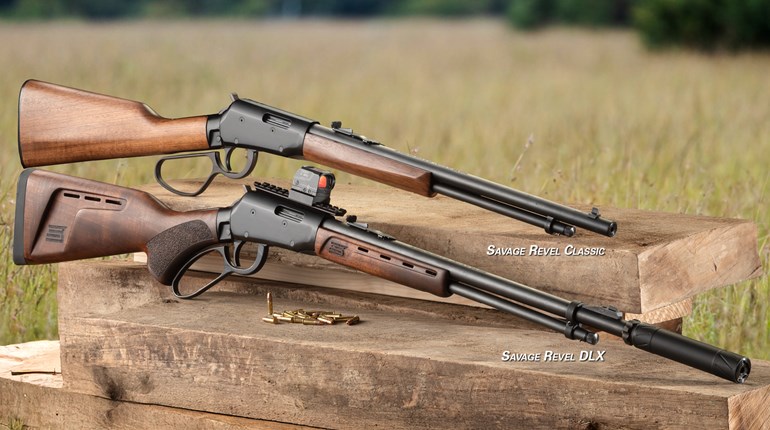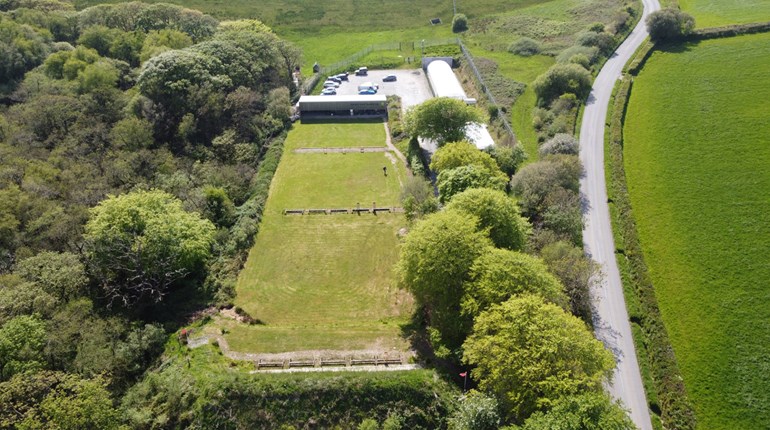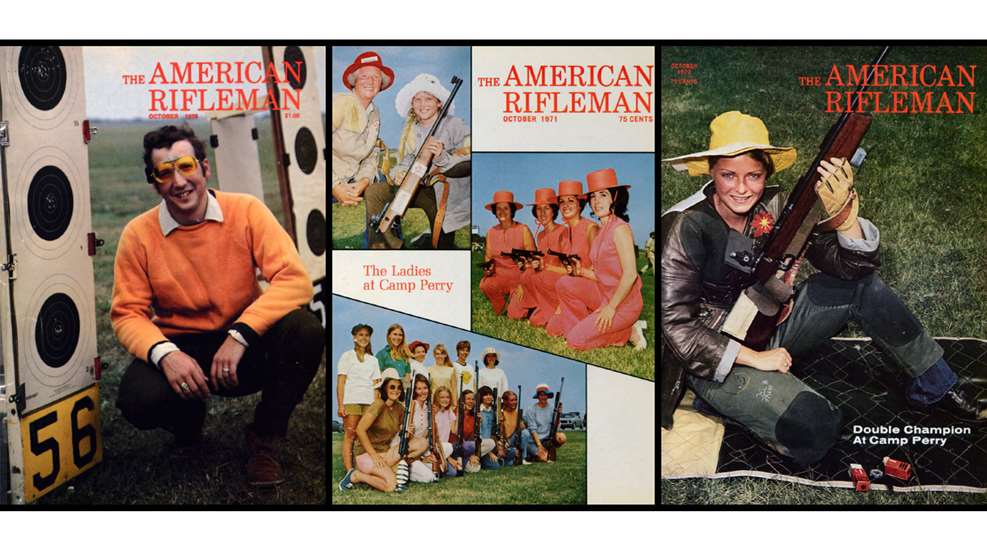
If you haven’t already, be sure to read Part 1, Part 2, Part 3, Part 4 and Part 5 of this series of articles celebrating the National Smallbore Outdoor Rifle Championship Centennial.
The second half of the Golden Age of the Smallbore National Championship saw many of the previous decade’s names as well as a few first-timers. The 1970s brought about changes while still keeping the historical significance of what this age-old match truly means to many dedicated competitive shooters. Read these Smallbore Championship highlights from the 1970s.
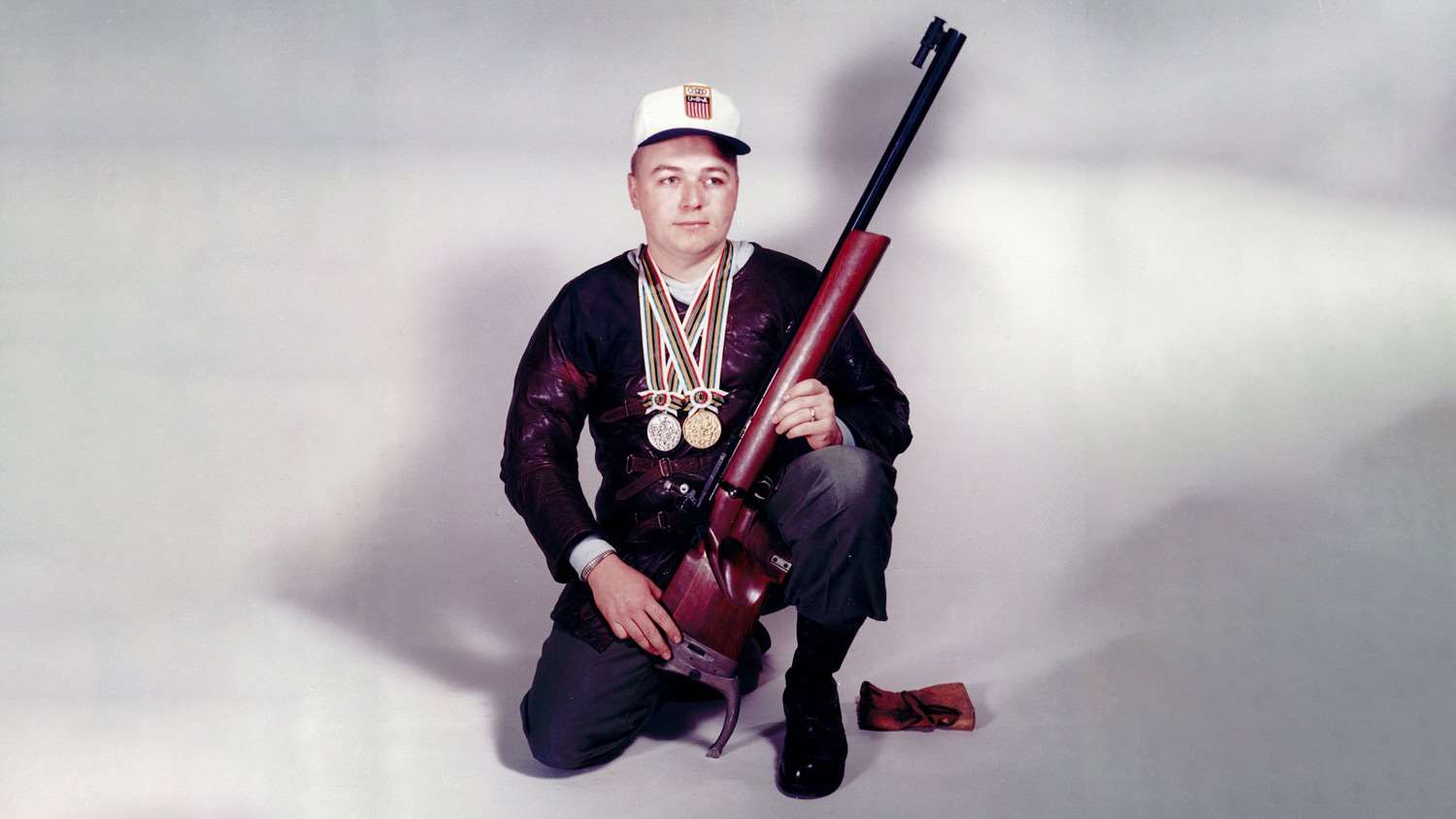
1970
The first 1600 aggregate of 1970, shot with iron sights, saw Marine Reserve Major Jim Hinkle shoot a 400-40X at 50 yards. Early the next morning he resumed firing attempting to set a National Championship record and banged 15 rounds down range before a shot escaped the X-ring. His 400-40X-15X established a record that stands to this day.
Captain Dave Ross displayed rock steady hold and nerves to keep the lead with a perfect 1600.After two days of iron sights, Captain Dave Ross, USAR, Ronald West and Ron Coleman were bunched up in a three-way tie, each down four points. The championship went to Ross on X-count.
Greg Tomsen, who had been a standout rifleman at New York’s Saint John’s University, was one of a pack of 10 who fired perfect scores of 400-40X with any sights at 50-yards. To declare a winner in a match with an unbreakable tie, the competitors squared off in a sudden death shoot-off. Whereas Hinkle had a calm morning to make his assault on a record, these shooters would have to contend with late afternoon conditions after firing had been completed.
A small crowd of supporters, shooting aficionados and kibitzers gathered behind the line and set up spotting scopes as targets were posted. In rapid succession, Tomsen filled the four record bulls of his target with Xs. The range crew confirmed his 20X clean as well as one for Ron West and Pres Kendall. Fighting through wind, murky mirage and a darkening sky, they shot another 20 shots. The range crew, anxious to get to the volunteers’ party, scored the targets on the frames giving West 17 Xs, Kendall 18 Xs, and Tomsen 19 Xs. Tomsen wished to challenge his target as he felt he had 20 Xs, but that would have to wait until the next day. While the volunteers closed the range, Tomsen packed his gear, accepting the congratulations of the gallery.
Tomsen never got a satisfactory answer to his challenge, although he did get his dollar back indicating he had won it. His target apparently evaporated into the ether, never to been seen again, denying him a chance to examine it at close range. On top of that little mystery, the record eroded over the winter, dropping from 39 Xs to 35 Xs, by a rule change that declared records in excess of 40 Xs had to be broken in groups of five Xs.
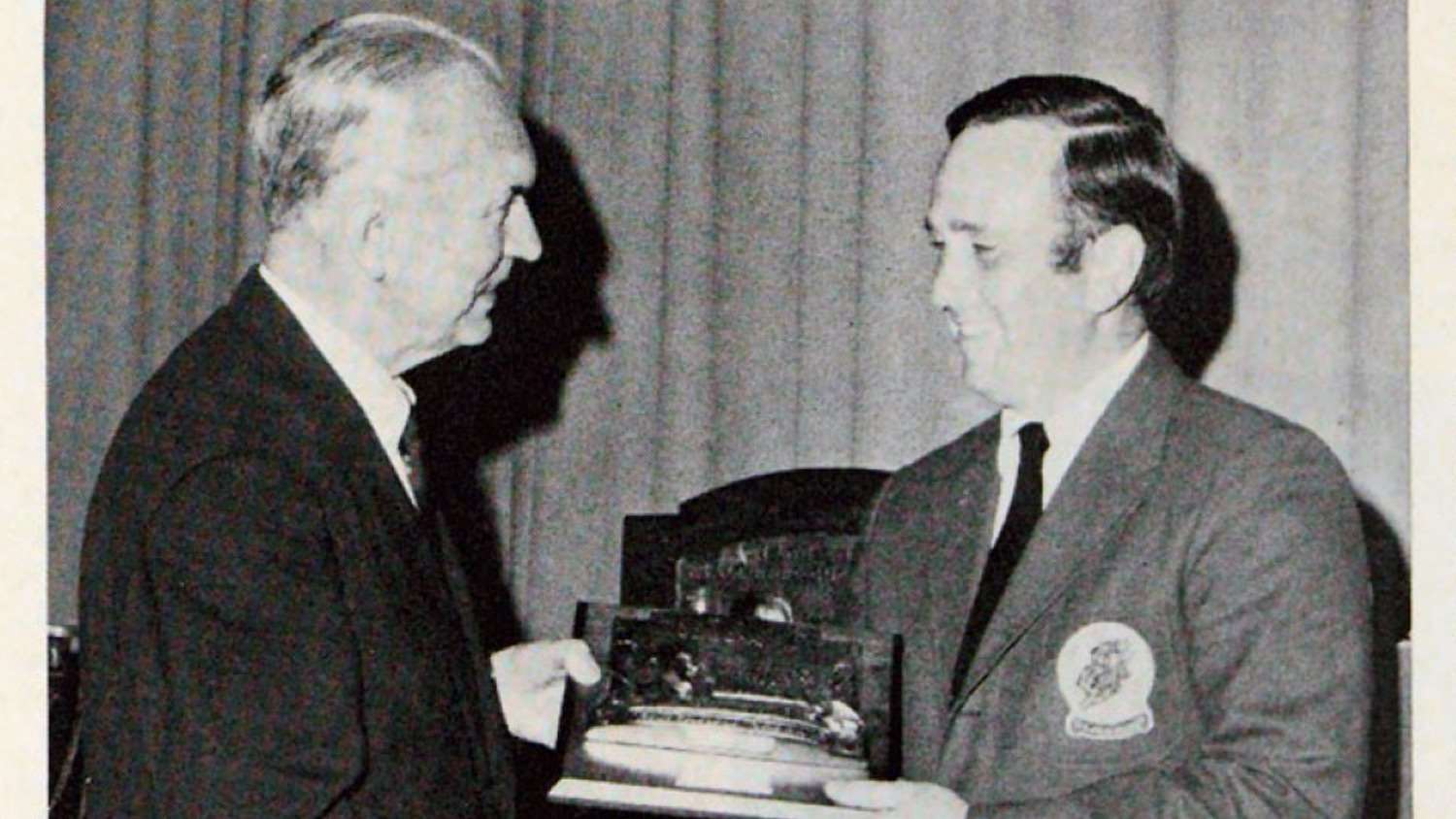
On the first day of scope, Ross displayed rock steady hold and nerves to keep the lead with a perfect 1600. He went clean the next day to win the Critchfield Trophy.
In position, Lieutenant Jack Writer of the Army Reserve popped above the horizon with a 3175-216X for the national title.
1971
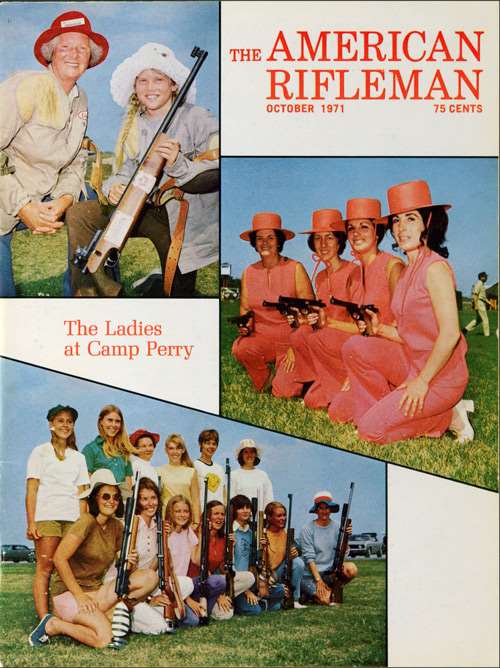
It was a fine turnout in 1971 to celebrate the National Rifle Association of America’s Centennial. The entries continued to rise since the NRA had taken over the running of the competitive program at Camp Perry. The military began to show some renewed interest in the conduct of the matches, as evidenced by the visits of seven general officers from both active and reserve components of the Army, the Marine Corps and National Guard. When the 355 prone competitors took to the line, they stretched nearly a half-mile from the first firing point to the last.
Tricia Foster was awarded the Hoppe Memorial Trophy as the 1971 Metallic Sight Prone Champion.
While he hadn’t won a single match, George Stidworthy emerged as the Any Sight Champion by the substantial margin of four points.
Sergeant John Comley had slowly crept up in the standings, a third-place finish in the Iron Sight Championship followed up by a second place any sights led to a first-place finish in the grand aggregate.
In the words of Yogi Berra, the 1971 position championships were “Déjà Vu all over again.” Earlier that year, Lones Wigger, just as he had done in 1967, used his precious Rest and Recreation leave to fly home to participate in the Pan American Games tryouts in Phoenix. He immediately returned to Vietnam, but was ordered back home at the behest of the NRA to represent the U.S. at the Pan Am Games in Cali, Columbia.
After winning a silver medal in the 50-meter position match, Wigger boarded a commercial flight to Miami where he joined his wife Mary Kay and headed north for Perry. Driving through the long night, they pulled up in front of the entry office at 5:00 a.m. Wigger took a nap, awoke in time to pick up his entry packet and reported to the line to attempt to regain his lost position crown.
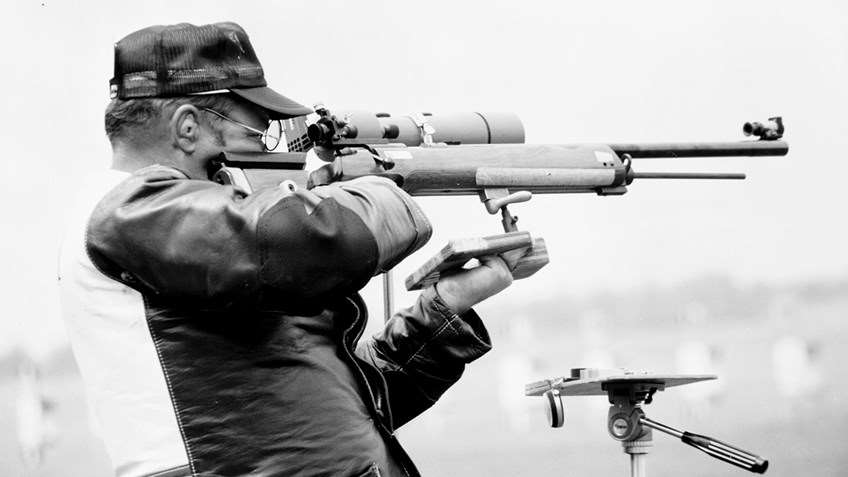
By the end of the day, the sleep deprived, yet fiercely competitive Wigger was busy basking in the glow of a record-setting score. Later, Wigger was astonished to learn that his record had stood, but only for a few minutes. Mary Keys, a petite 17-year-old schoolgirl from Springfield, VA, had topped him by a point.
The story, perhaps apocryphal, grew that the bone-tired Wigger was holding a box of ammunition in his hand when he heard the news. He chuckled and, tapping the pasteboard with his trigger finger to draw attention to the printing, suggested that young Mary’s parents should have paid attention to the message, “Keep out of the reach of children.”
After a good night’s sleep, Wigger awoke well rested and proceeded to win both Any Sight matches. His two-day aggregate was just one point below the National Championship record he had set in 1966 and, although he didn’t set a match record, he now had won a record-setting sixth National Position Championship. Unaware that Wigger would be at the Nationals, the Army, which swept the team matches, had not entered him on any of their teams.
Much to everyone’s surprise, the Metallic Sight Prone Champion was Private First Class Steven Kern, USA, who was very consistent and ended the first two days with a Metallic Sight score of 3197-247X.
The second half of the championship got underway and Ross, in a valiant attempt to regain his prone crown, topped the 1962 prone champion, Kendall, by a wide margin of Xs for the Any Sight title. Both men carded 3199s, but Ross amassed 289 Xs to Kendall’s 277 Xs.
In the end, Ross needed absolute perfection to repeat as national champion, but he fell short by a single point and the national title went to Kendall.
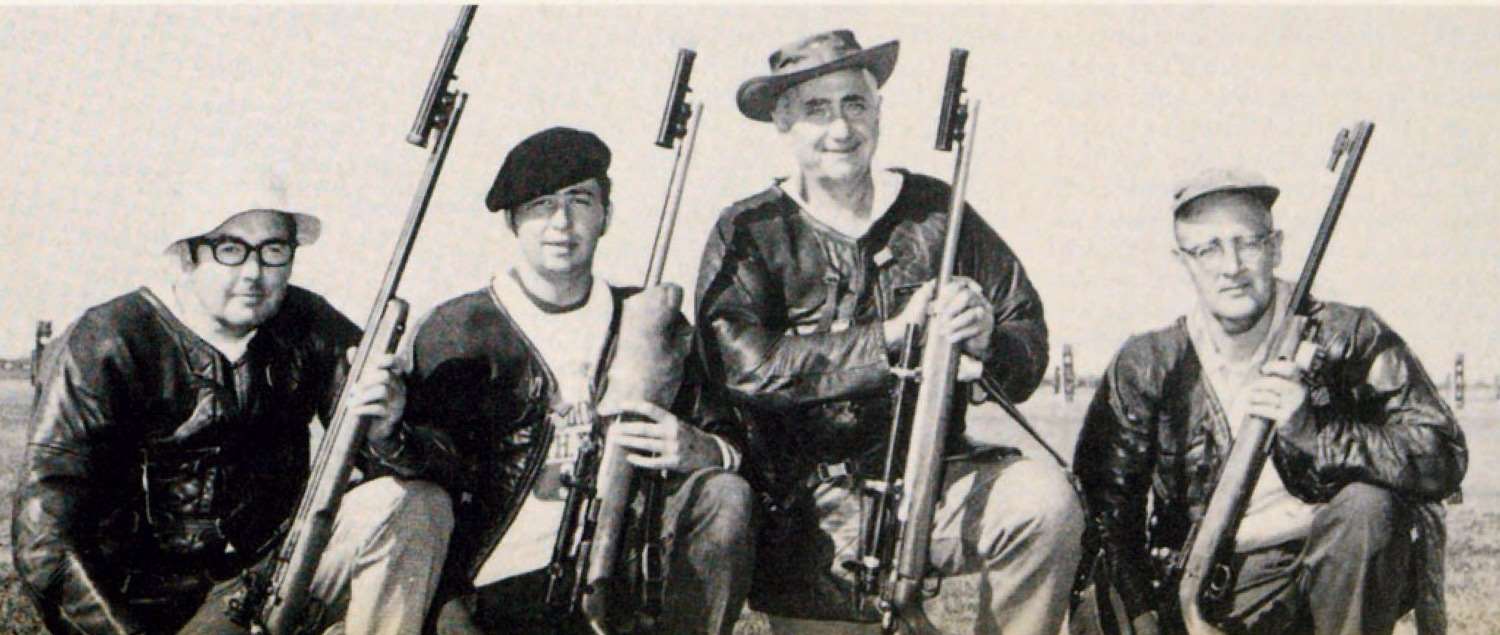
Tom Whitaker, now a civilian, became the first recipient of the William P. Schweitzer Award. Schweitzer’s widow, noted artist Gertrude Schweitzer, memorialized her husband the renowned prone competitor of the years between the World Wars, by providing a supply of 14-karat medallions to be awarded to the National Civilian Prone Champion. The front of the medal bears a representation of Schweitzer in shooting coat, rifle in hand, while the obverse shows a prone shooter and bears the inscription, “NRA Small Bore Rifle Civilian Prone Champion.”
1972
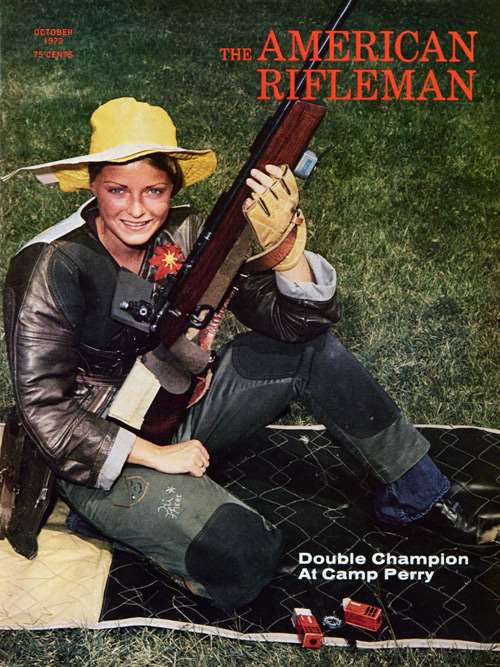
The 1972 position matches were blessed with typical August Camp Perry weather. U.S. Army Reserve Captain Margaret Murdock captured the iron-sight Woman Champion title with a score of 3192-229X. Mary Keys and Jack Foster split the two Iron Sight matches. By now, Keys was an All-American in her second year at East Tennessee State University, and she fired Eley Tenex cartridges using an Anschutz 1408 standard rifle with metallic sights and Redfield 3200 scope that year. The next day, left-handed Marine Gunner D.I. Boyd burst out of the pack during the first match of any sights with a new record score of 799-58X. With a full head of steam, Boyd won the second match of the day to become the National Position Champion.
1973
The excitement that surrounds the National Championship was heightened in 1973 because it was a Pershing Trophy Match Year. Iron Sight competition indicated two things. The first was that the first two days of competition for the national title was tough. The second was that winning the Pershing Trophy was not a sure thing for the hosts as British National Champion David Brickles had finished the Metallic Championship in second place, sandwiched between Lones Wigger and Tom Whitaker.
The riflemen on the U.S. Pershing Team were Wigger and Pres Kendall of the Army, Steve Kern of the Army Reserves, civilians Whitaker, Richards, Allan Knowles, Ron West and Dave Weaver, and a pair of Marines: Jerry Boswell and John Akemon. William Summers and Eric Sundstrom were alternates while Adjutant C.J. Schaeffer and Coach Bill Krilling assisted Captain Harry Hoy.
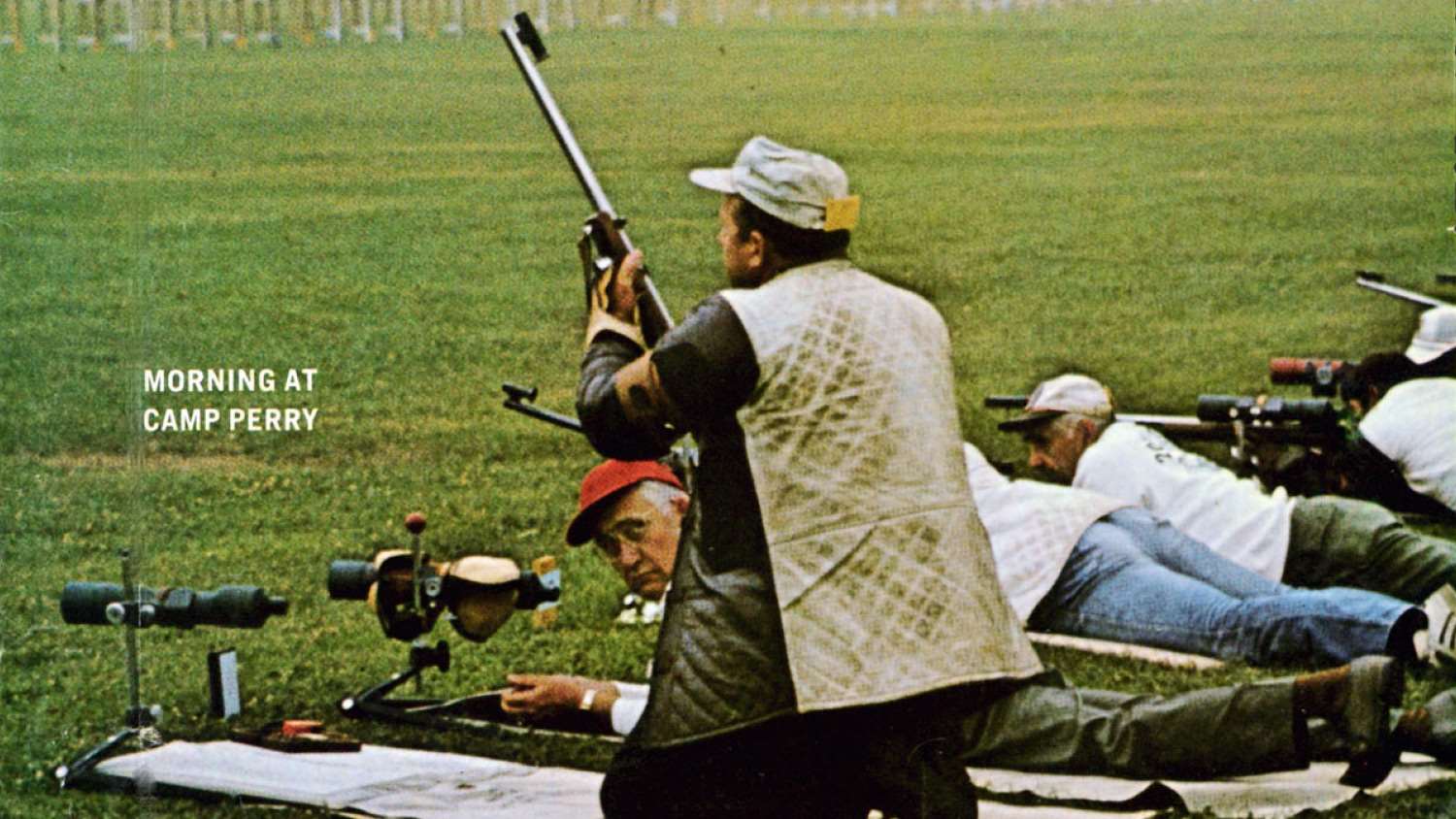
The course-of-fire for the Pershing is a Dewar on the host nation’s targets. The U.S. Team left the 50-yard line with a perfect score, 2000x2000 and a four-point lead over the visitors. Long range is a great leveler and the U.S. Team, even with a small lead, could not rest easy as the British are known for their ability at 100 yards and skill honed on the notoriously difficult range at Bisley. The home range advantage held as seven of the U.S. belly shooters cleaned the final stage and the U.S. kept the Pershing Trophy.
The last two days got underway with no letup in intensity as scopes came into play. The Any Sight Championship was decided in Bob Mitchell’s favor, but three previous champions, Wigger, Whitaker and Kendall, were battling for the grand aggregate. Whitaker and Kendall had finished and were tied at 6395 with Whitaker having a four X lead. Wigger was at 6386 with 545Xs, higher than either Kendall or Whitaker. After four days, the whole tournament was reduced to the last cartridge sitting in Wigger’s chamber. Fighting a strong pulse that had him all over the 10-ring, the Olympic medalist concentrated on the basics and squeezed off his final shot, a shabby one by his standards, but it cut the 10-line.
Soon after the first position match began, a boat sailed into the impact area and shooting was suspended for four hours until the errant vessel could be removed. When the command to commence fire was given after lunch, reigning champion D.I. Boyd shot through the wind to jump into the lead, finishing as thunder rumbled, lightning sparked, and the second ceasefire of the day was ordered due to stormy conditions. So much time had been lost that the second Iron Sight match was postponed until the following day.
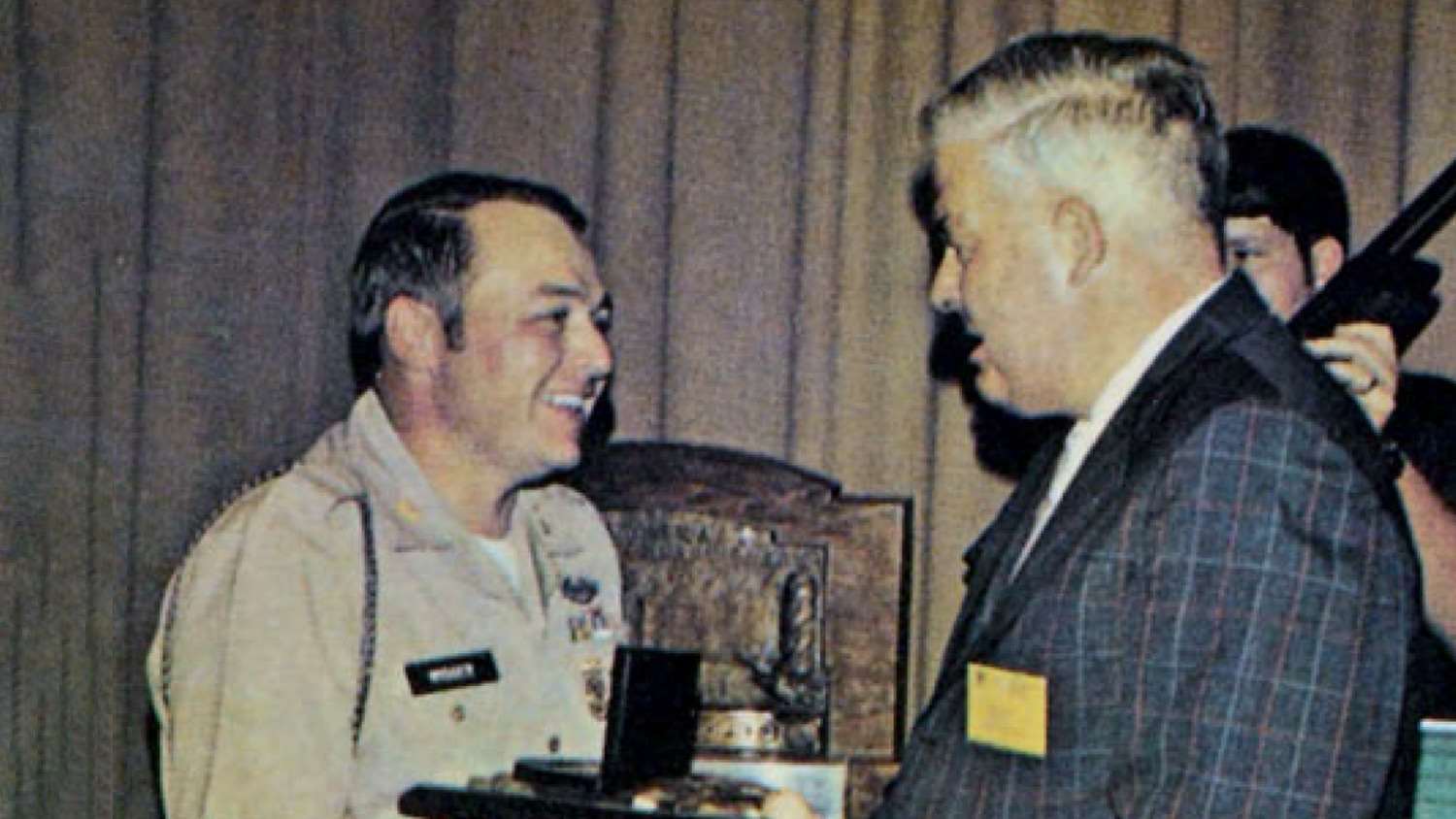
Wigger won the second Metallic Sight match setting up a head on head contest between the two champions. Boyd managed to pick up a point on Wigger, but he was still behind by one going into the final match. The two men swapped the lead back and forth throughout the last match and, just as in prone, it came down to the last shot. In this case, it was Boyd who had to make the critical shot. The Marine needed a 10 to sew up back-to-back wins, but it was not to be his day and Wigger won a record seventh National Smallbore Position Championship.
Wigger made history in 1963 when he became the first to double up on the smallbore championships, doing it again in 1973. He was making a habit of winning at the National Matches.
1974
The established names in the sport were flexing their muscles in 1974. Experience counted—as 515 prone and 420 position competitors soon found out—as they pumped a half-million .22 LR bullets downrange at the match.
Pres Kendall became the second person to win three National Smallbore Prone titles.Light showers greeted the shooters on the first day of the prone championship. There was enough wind and rain to make life interesting. No one escaped the day unscathed. Pres Kendall did not win a match in the first two days, but finished high enough in each event so that his aggregate score was good enough to garner him the Metallic Sight Championship.
The wind seemed to blow itself out and the Any Sight matches gave all a breather from the constant tension of wind doping that had nearly exhausted everyone. The conditions remained stable and Tom Whitaker took advantage and led the pack at the end of the first day.
On the final day, Kendall and Dennis Dingman dueled, but in the end, Kendall won a momentous victory. Bill Woodring had won three straight prone titles and G. Wayne Moore had back-to-back wins in 1946 and 1947. Although Kendall had not done it in consecutive years, he was still only the second person to win three National Smallbore Prone titles.
In position, Jack Foster was able to withstand the typical Camp Perry gusts and let offs better physically and mentally than anyone that afternoon and he took the lead.
On the second day, Lones Wigger moved up from the middle of the pack to second place, just eight points behind the leader. Foster and Wigger, two firing points apart on the firing line, faced off in the final match. They were even in prone, but Wigger made up six points with an outstanding 197 standing, then matched each other with a pair of 200-14X scores in sitting.
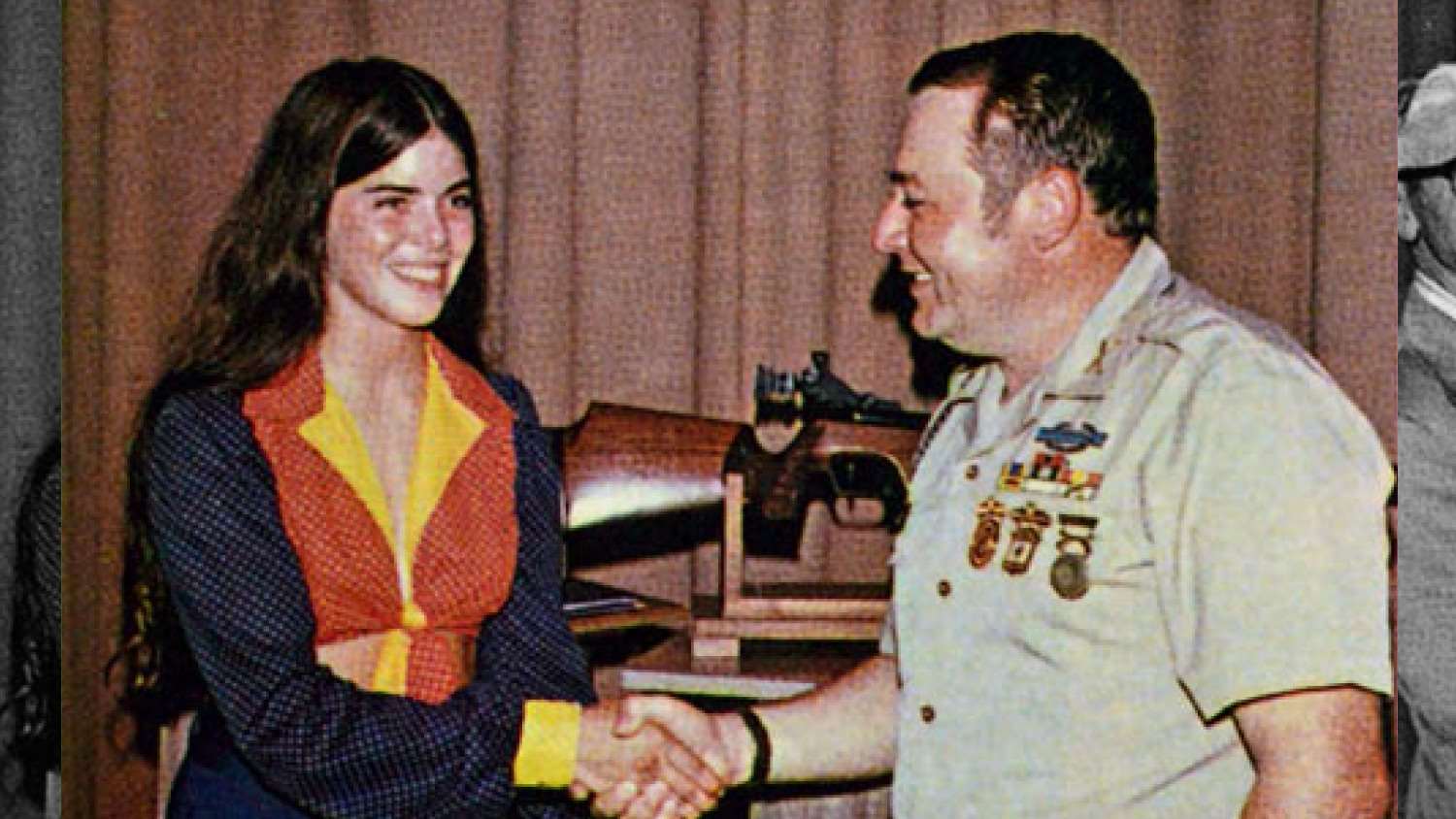
Two points separated the teammates as they settled into the kneeling position for the final showdown. Foster finished first with a disappointing 193-6X. After straightening out his cramped right leg, he stood ready to congratulate Wigger as he finished with a score of 199-9X. Wigger had retained his title and added a record eighth position title to his list of shooting accomplishments.
1975
When 527 of the nation’s best competitive rifle shooters gathered in 1975, the prone championship got off to a fast start as Lones Wigger demonstrated a level of excellence seldom seen even at Camp Perry. Over the first two days of Metallic Sight competition, Wigger showed why he was a major player in the smallbore game. His first 319 record shots were Xs and 10s at an astounding ratio of 4 to 1. At 100 yards, on the final shot of the final bullseye in the final Iron Sight match, he let loose a shot that fell a bit more than two inches from the center for a nine. Perhaps he was a bit tired or nervous or just maybe it was a bad round. Wigger now wore the Metallic Sight crown.
Some might concede the championship to the leader going into the scope phase, but this was Perry. Throughout the next two days 400s, 1600s and 3200s popped up like mushrooms after a rainfall. Wigger posted a 3200-298X, just 22 Xs short of perfection for a record-setting Any Sight title. When combined with his Iron Sight score, the new prone champion had amassed another Perry record, a 6399-556X. Wigger also joined Bill Woodring and Pres Kendall as the only winners of three prone titles.
The U.S. Randle Trophy International Match Team would also set a new standard of excellence on August 12, 1975. On that bright Tuesday morning, under the watchful eye of the official witness and veteran British Randle Team member Veronica Tidmarsh, the 10 women of the U.S. Randle Team took up position on the firing line and proceeded to shoot 400 record shots inside the 10-ring for a perfect 4000x4000. Oddly enough, the X-count of 303 was the same as the caliber of Britain’s standard military bolt rifle—the Short Magazine Lee Enfield. Under the guidance of Captain Winnifred Carr and Coach Ellen Ross, the team of Sharon Ehrhardt, Schuyler Helbing, Mary Stidworthy, Sherri Lewellen, Janet Friddell, Diana Zimmerman, Barbara Hampson, Deborah Hicks, Karen Monez, Sue Floer and alternates Inez Sargent and Chandler Chapman had accomplished a seemingly impossible feat.
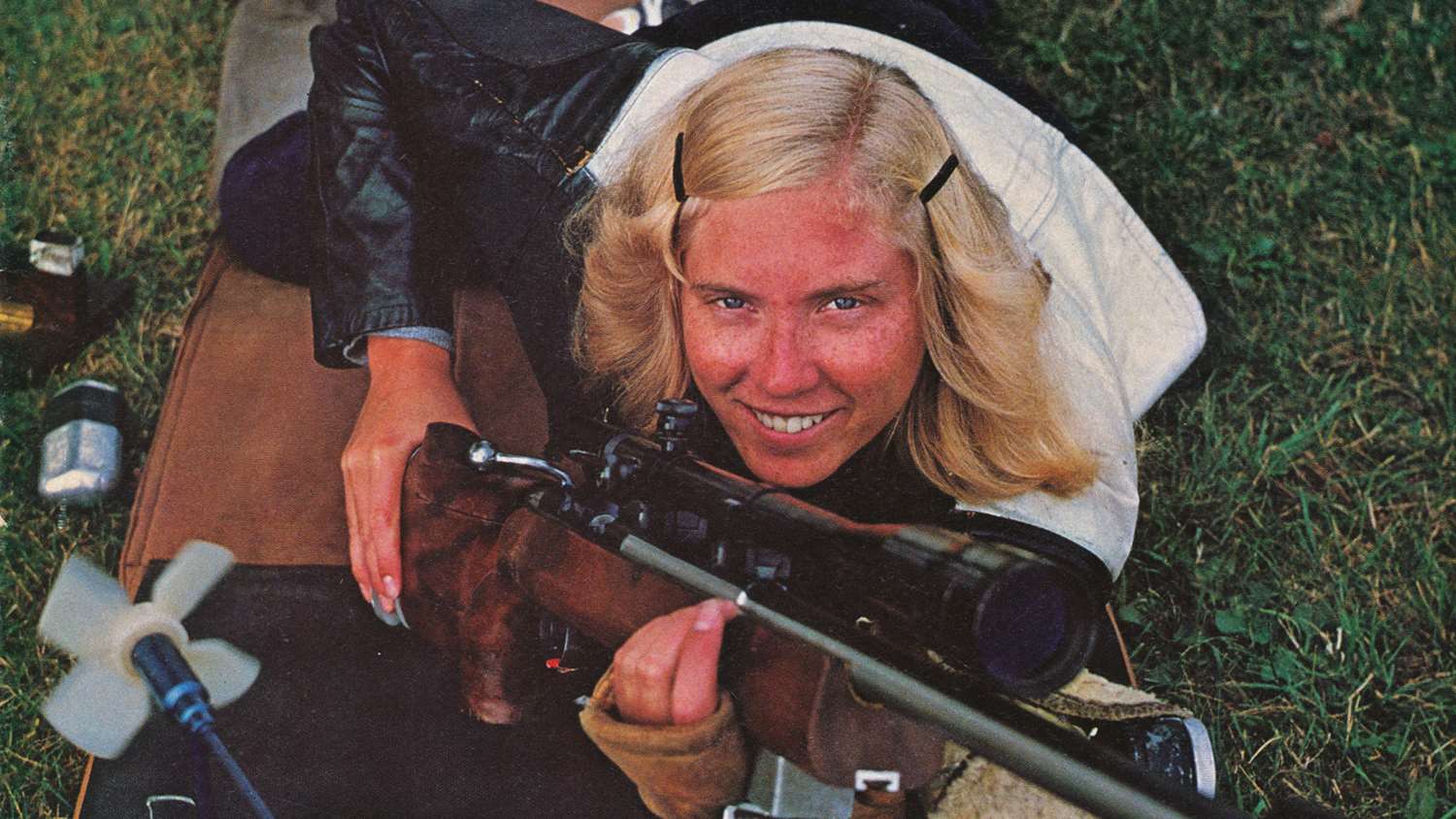
The first day of position was windy and scores reflected the abuse that the wind brought the shooters. At the end of the day, Bob Gustin earned the Iron Sight title.
The final day of the position tournament dawned dark and brooding. Moments after the command to commence fire was given it began to rain. By the time the standing stage had ended, the rain had become a steady downpour and the match was put on hold in hope that the rain would let up. The delay was not for the benefit of the competitors as they could always dry off, but the targets were so sodden that they could not be scored. It was hoped that the rain would let up and allow the match to continue but, after a three-hour delay, the Match Director reluctantly cancelled the remainder of the program. With that administrative call, Gustin became the 1975 position champion.
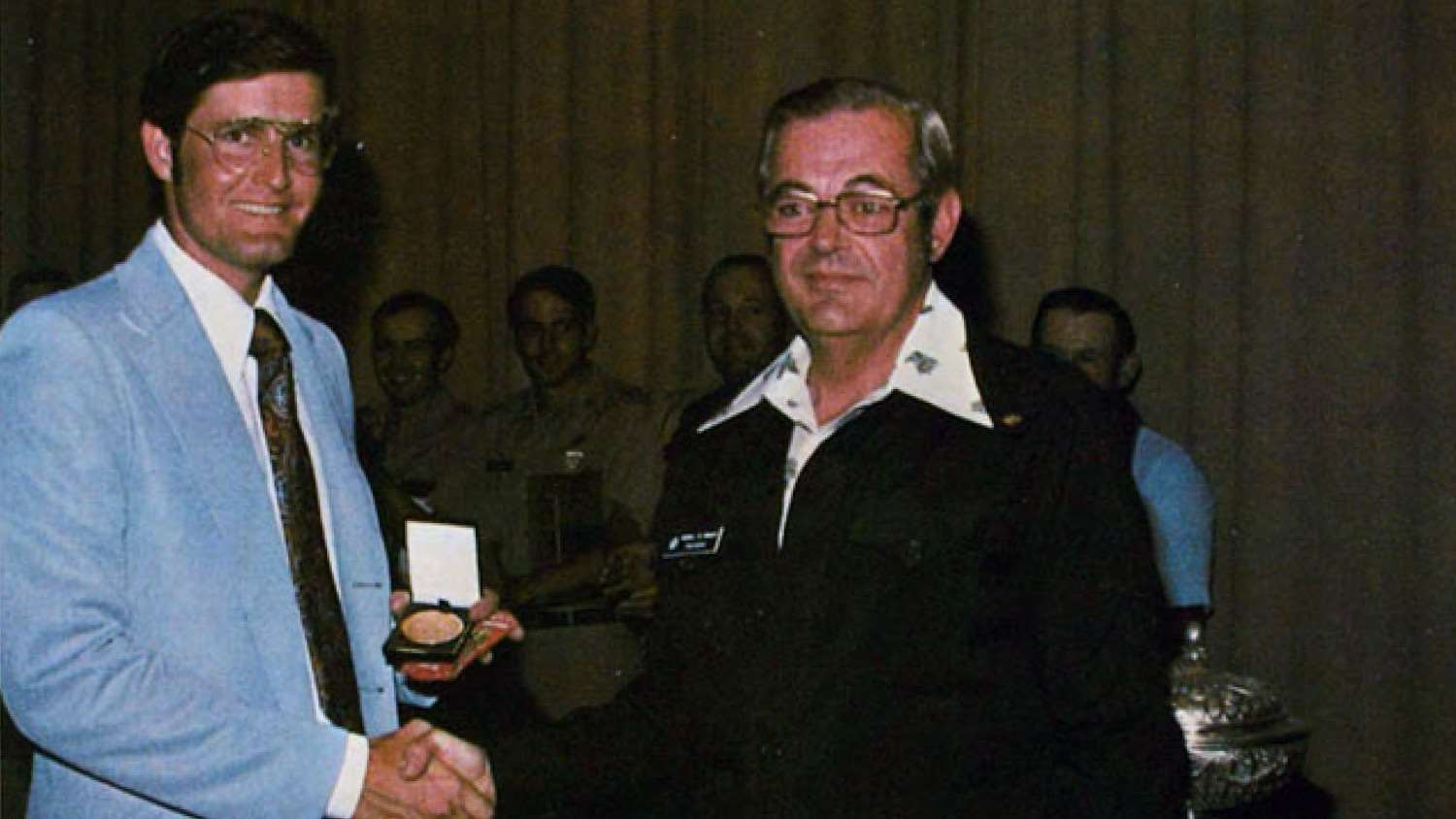
1976
For the U.S. Bicentennial Celebration in 1976, a field of 529 of the best prone practitioners made it clear that the eventual winner would have to have the best possible ammunition and rifle combination, nerves, a hold of steel and a touch of luck to outsmart the wind at the National Matches. Nevertheless, the Iron Sight aggregate played out pretty much as it had the previous year with Lones Wigger the winner.
The second Any Sight competition developed into an X-shooting contest. The U.S. Army Marksmanship Unit’s (AMU) Captain Ernie Vande Zande shot a pair of perfect 400-40Xs and was forced into shoot-offs on both occasions. Thirty additional center shots were necessary to fend off Ron West in the first match—while only 25 were needed to keep Mary Stidworthy and Clark Harris at bay the second time around.
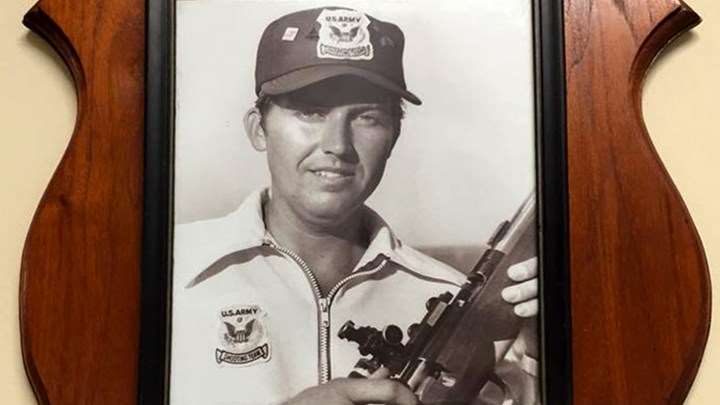
In the meantime, Herb Hollister was getting his money’s worth following recent eye surgery. The old hard holder’s experience and equipment, aided by his ophthalmologist’s skill, combined for a 400-40X in the 50-Meter match. With a Camp Perry record within his reach, he lay down and calmly punched out an additional 10 Xs for a 400-40-10X final tally. The record on the tough target would stand into the next century as tribute to this fine rifleman.
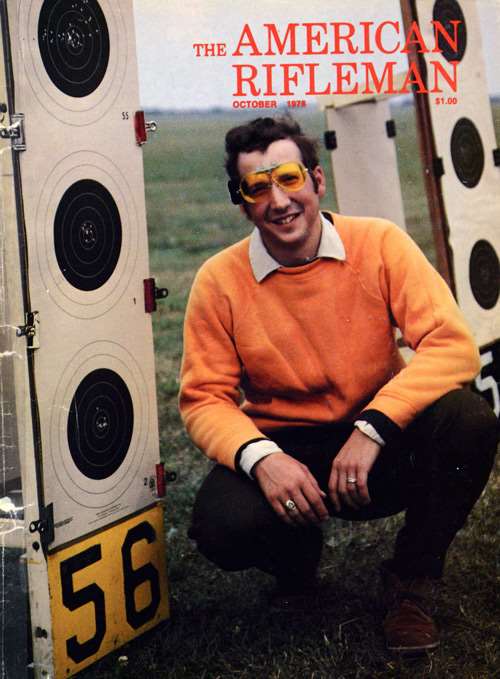
As it had so often happened, the last nerve-wracking shots would decide the champion. The final targets were hung and the firing began. Dave Weaver watched the crosshairs of his 15x Lyman Superspot dance a wild fandango around the 10-ring, scattering a wide pattern of 10s and Xs. His first shot in the last bull printed higher than he would have liked, the only nine he had shot at 100 yards all week. Wigger was now in the lead. Chasing negative thoughts from his mind, Weaver delivered nine more Xs and then peered through his scope at Wigger’s target, just a few points away.
The canny Wigger was having the same problems. Fourteen minutes into the final stage of the final match he had fired only two record shots. With just six minutes left he began piling up Xs, but a moment’s inattention as he rushed to beat the clock. It cost him a nine and the lead switched for the final time. And just like that, the roles were suddenly reversed and last year’s runner up, Weaver, became this year’s champion.
The next day was position and Wigger was unlikely to let another national title slip through his fingers. At the end of the day, Wigger was the Iron Sight Champion by a two-point lead.
They say that confidence breeds success. No one would ever say that Wigger was not a confident man. After the first scope match, where his position groups resembled most people’s prone targets, 78 of his 80 record shots were inside the 10-ring and Wigger extended his lead to seven over second place Lanny Bassham, who needed eight points to beat Wigger in the final match to win. But, even the newly crowned Olympic Champion could not score 804 points with 80 shots. With this win, Wigger claimed the position title for an amazing nine times in 14 years.
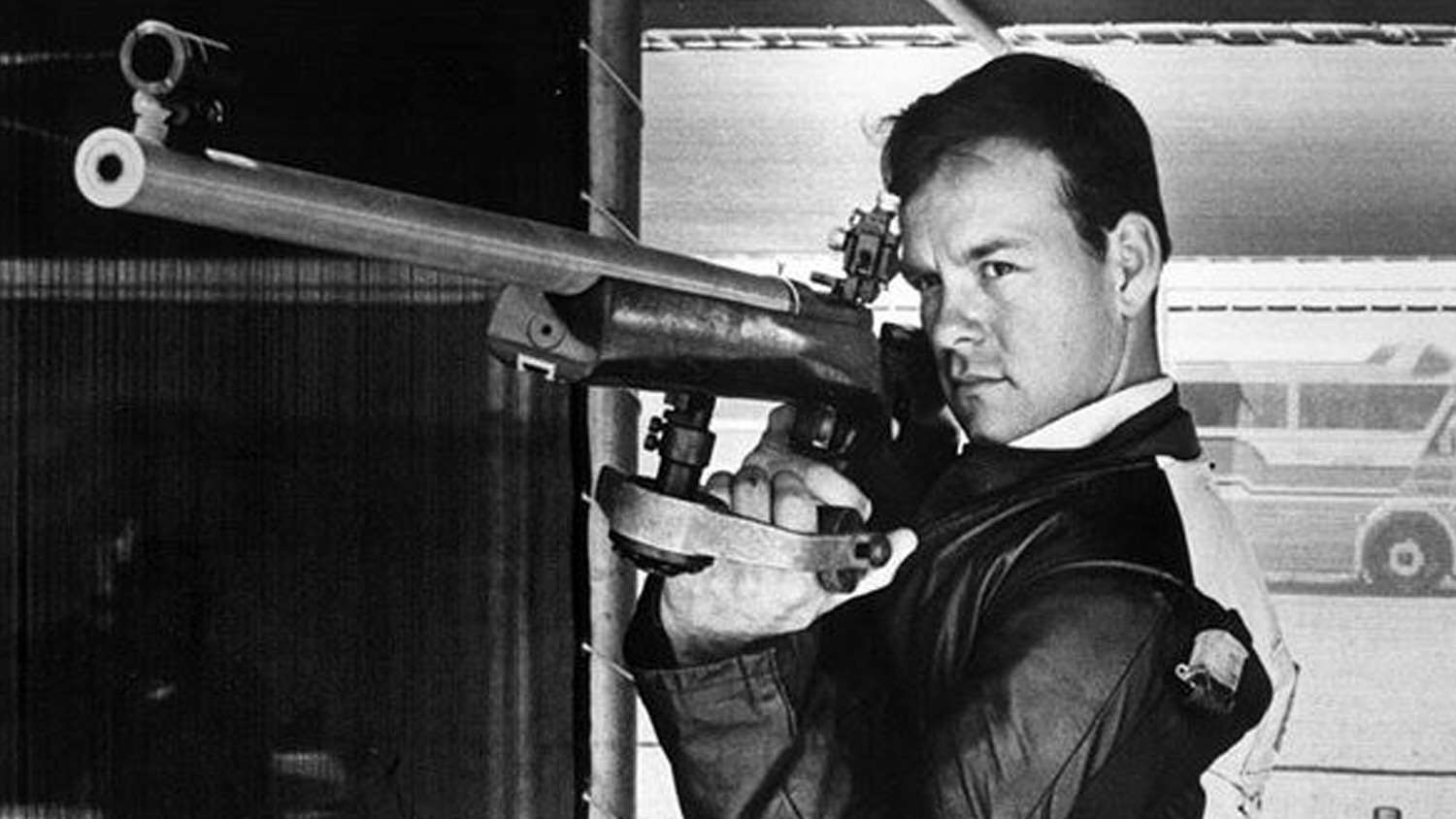
1977
The 1977 Roberts coincided with Camp Perry. With many of the top contenders in England, including the 1976 champion, it was anybody’s guess as to who might take over from Weaver.
Lones Wigger was enjoying the congratulations being heaped upon him for his promotion to Lieutenant Colonel and for the fact that he had recently joined Tom Whitaker in that most exclusive of all prone fraternities—the 6400 club.
The nation had a new smallbore prone champion, Mary Stidworthy, the first woman to win the open title since Viola Pollum broke the gender barrier in 1955.The competition and wind were fast and furious during the prone matches. A violent rain storm broke across the range that did much to upset the timing of the matches and the nerves of the competitors. By the end of the first sodden day, Texan John Chapman was leading the field, but Wigger had challenged a shot. He believed that he had been given an extra point and was rewarded for his good sportsmanship by the return of his challenge fee and a score reduction of one point which left him in third place.
By end of the second day, the top three remained the same. Chapman’s two-day total was a 3197-267X giving him the Metallic Sight Championship.
The following morning, with scopes affixed to their rifles, the three leaders Chapman, Mary Stidworthy and Wigger knew that there was simply no room for error. At the end of the third day, Stidworthy was in the lead by one point and six Xs.
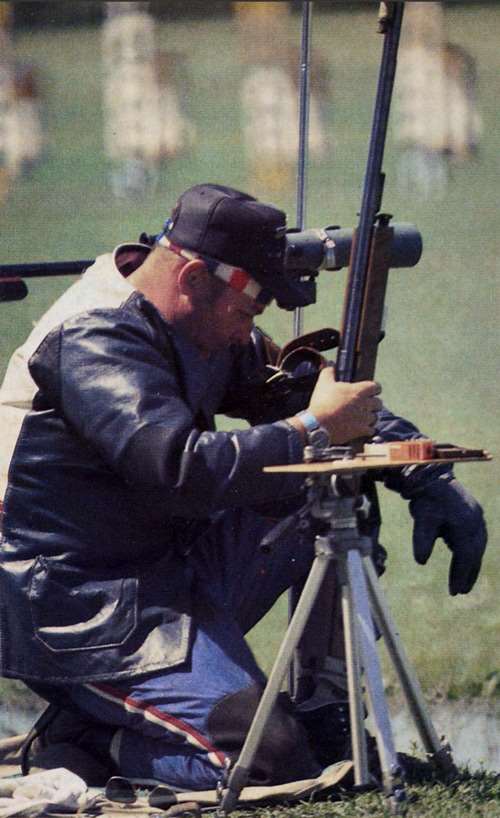
The final day had a good weather forecast, with conventional wisdom saying that it was Stidworthy’s championship to lose. Wigger’s only hope was that the hard-holding Arizonian might drop a point and he could pick up enough Xs to make the difference, both possible occurrences. Throughout the day, the pair ran neck and neck in the X-count. Stidworthy did not collect as many Xs as Wigger on the last stage, but cleaned it and had an identical aggregate as Wigger. The nation had a new smallbore prone champion, Mary Stidworthy, the first woman to win the open title since Viola Pollum broke the gender barrier in 1955.
Wigger made it clear that a second-place finish in prone was not going to affect his performance in his personal fiefdom, the position matches. In a tussle with Captain William Beard of the Army Reserve, Wigger emerged on top by a slim eight-X margin in the first of the four matches that made up the aggregate.
Beard continued to harry Wigger with a win in the second Iron Sight match, but Wigger simply produced consistent results. In the end, the rabbit explosiveness of the younger competitors could not overcome Wigger’s turtle-like ability to produce scores in the mid-790s all the time. The Old Lion had his 10th position title, breaking the match record he had set in 1966.
1978
After a 20-year run, the Four-Position outdoor national championships would be consigned to the history books, to be replaced by NRA Three-Position. It opened a whole new vista in record setting for the 423 competitors that participated in the inaugural event at the National Outdoor Smallbore Championships.
It had been over 30 years since G. Wayne Moore had successfully defended a prone championship. Arizona Army National Guard Specialist Fourth Class Mary Stidworthy, the defending champion, was soon to change things in a most dramatic manner.
Wigger’s score remains the lowest to ever win an Iron Sight Metric Position Championship.National Matches veterans were pleasantly surprised when the first relays of the prone Metallic Sight matches were shot in almost perfect conditions. Less experienced competitors reveled in the tranquil morning while the more experienced knew that the serene conditions were more likely the calm before the storm.
Ron West bested 417 others to win the Metallic Sight Championship by seven Xs. Winds rose and scores dropped during the third day of competition. Even with the advantage of scoped rifles, the conditions proved tricky enough to keep all but two shooters, match winner Gunnery Sergeant John Comley of the Marine Reserves and Sergeant Kay Anderson of the All National Guard program from perfection. Stidworthy was seven points down behind four riflemen who had eight prone titles between them and two other incredibly talented contenders. With one day of scope left there was little reason to be optimistic except for the old prone shooter’s mantra of, “Where there is scope, there is hope.”
The final day opened with gusty winds blowing in from the west and the Meter Match leveled the playing field. Wigger and Stidworthy were clean with Wigger in the lead and Stidworthy just two points behind. During the Dewar, the bottom fell out of Wigger’s grocery bag as he let two precious points slip away—allowing Stidworthy to move into the lead.
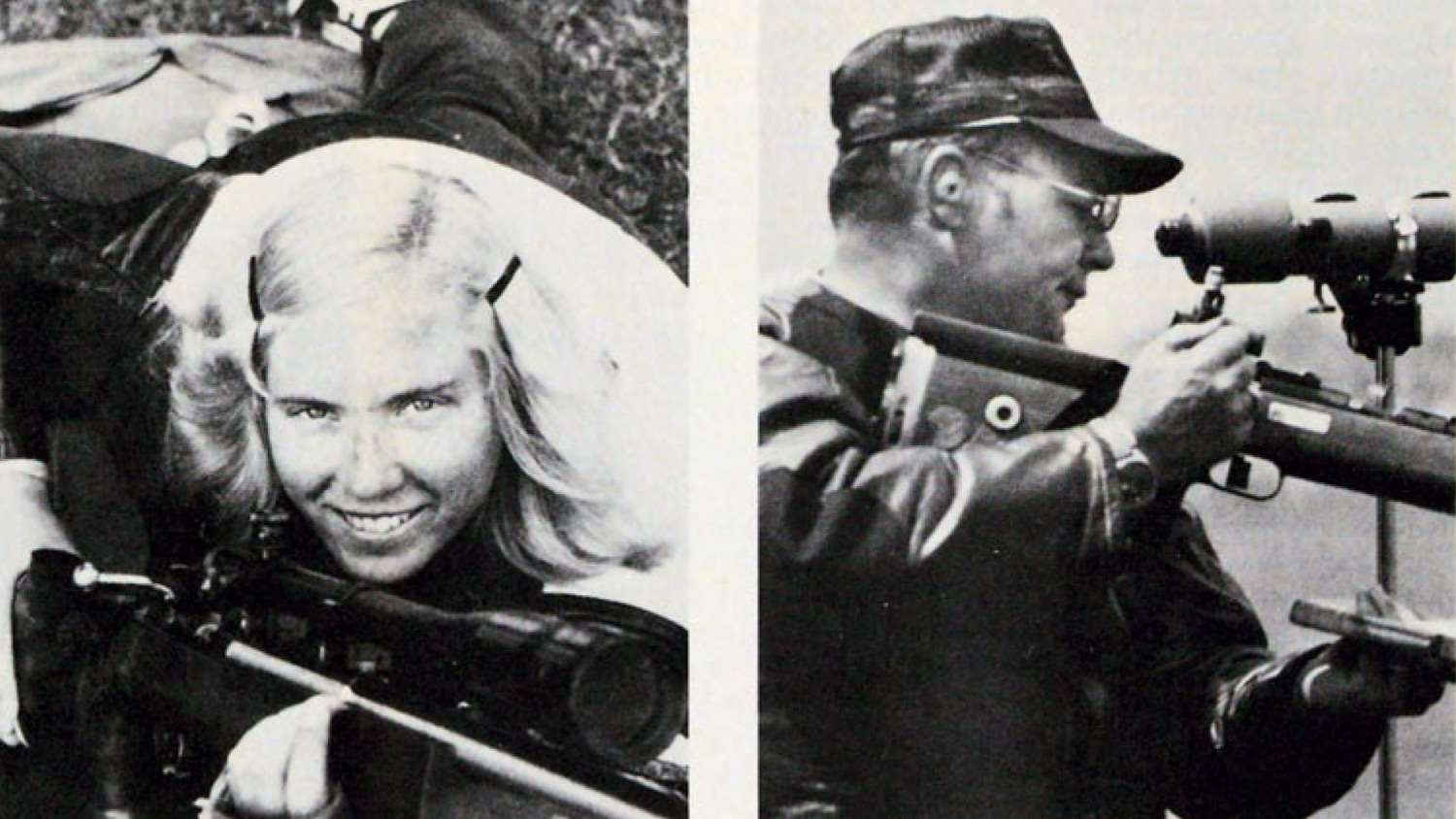
For Stidworthy, it suddenly was 1977 all over again—setting up for the last match of the last day and she was leading by Xs. Instead of having to hold for the X-ring, an area of just 0.78 square-inches, she had essentially a football field, the 3.14 square-inch 10-ring, for an aiming point. She had not placed in the money all week, but she took the final match in grand style with a score of 400-31X. This was her second consecutive national open title.
The curtain rose on the new Three-Position format in winds that only had increased in fury from the final day of prone. The first match of the new international-style position championships went to Connecticut National Guard Staff Sergeant Bill Lange, who, defying the ferocious winds, shot a 399 score in prone.
To shoot standing on the unprotected range in the face of the unrelenting gale was such a trial that many were lucky to simply have all 40 record shots make it on paper. Strapping himself into kneeling, Wigger, hunched forward, shot a phenomenal 381 in the buffeting winds, 15 points ahead of his nearest competitor. Wigger had won the first in a long string of Three-Position Iron Sight Championships at Camp Perry. With the decisive kneeling victory, he moved into uncontested first with a 1084—a score that set two diametrically opposed Camp Perry records. For a year it was the record for metallic sights. Since then, it has remained the lowest score to ever win an Iron Sight Metric Position Championship.
The final day saw calmer conditions and telescopic sights. Wigger nailed the Any Sight victory and the position championship 15 points ahead of his nearest competition.
1979
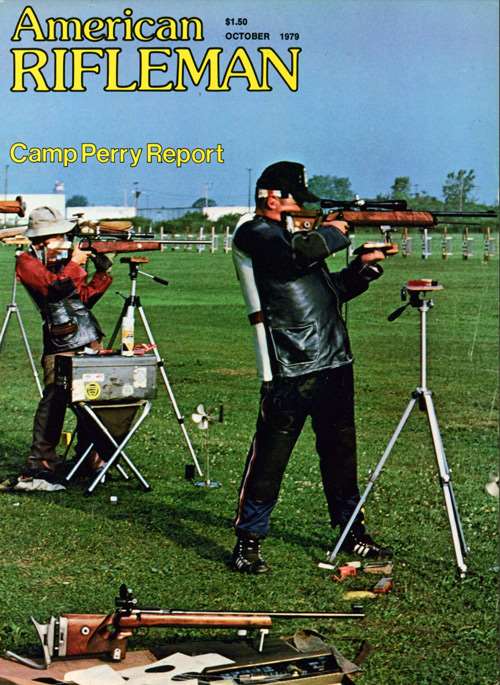
Camp Perry was bereft of typical winds in 1979. Dave Weaver was able to take advantage of the calm conditions to return to the winner’s circle. Three matches into the first day, he grabbed hold of the lead, relinquishing it only once during scope shooting.
This is not to say the victory was a cakewalk for Weaver. Like so many national championships, this one boiled down to the last match. Weaver was near perfect, but Bob Mitchell was a point better in any sights. When Mitchell lost his only point at 100 yards, the match and the national championship went to Weaver.
Mary Stidworthy was the first to receive the new Eleanor Dunn Trophy. Miss Dunn donated the trophy to recognize the high-scoring member of the U.S. Randle Trophy Team and Dunn personally presented the trophy to Stidworthy. In the early 1950s, Dunn was responsible for the organization and conduct of the first of the Randle Matches, serving as captain in 1953. Fittingly enough, the U.S. team, after losing to the English in 1978, regained the Randle Trophy on Miss Dunn’s last visit to the National Matches.
The second year of Three-Position competition was a veritable bacchanalia of record breaking. While the scores fired were of quality, the fact is that each match record broken was really a function of the fierce winds that left the previous year’s competitors whipping about like reeds. The Metallic Sight aggregate saw Fort Benning’s Captain Ernie Vande Zande and Kurt Fitz-Randolph of Tennessee Tech tying at 1145. Fitz-Randolph won on the strength of his higher-standing score.
Hardnosed international shooters to the core, Vande Zande and Fitz-Randolph stayed with iron sights during the Any Sight phase. It was a strategic error for both. Fitz-Randolph dropped four points prone while Vande Zande was embroiled in an eight-way shoot-off for the prone match. With just two matches to go, Wigger set a record for standing and moved into the lead. He won the day, set the Any Sight and Grand Aggregate match record, and picked up his fourth straight position title.
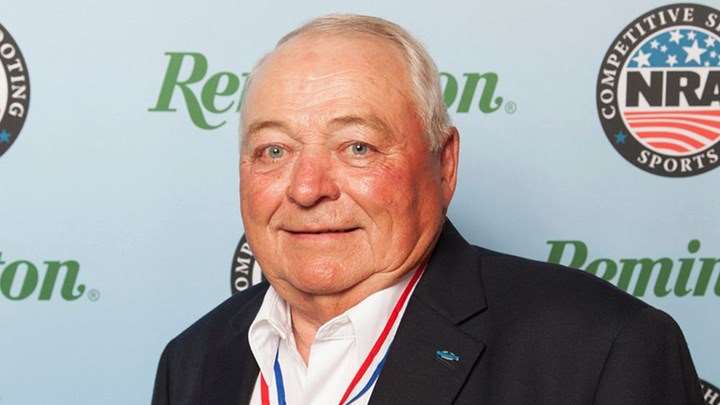
Records are meant to be broken. Eventually, and inevitably, the records set in this match would fall. Skills and equipment improved to meet the more demanding style of competition of NRA Three-Position. In a short time, the skill level of the shooters would improve so dramatically that scores began to approach perfection in all positions. To meet the challenge, the target sizes and scoring rings would be reduced and the efforts put out by competitors would increase. Crossman would have been pleased.
The next installment of the Smallbore National Championship series will be published soon. In the meantime, you can read these previous articles:
- The Seed Is Planted
- The Roaring Twenties
- Depression and War
- Post-War Reorganization and Innovation
- Golden Age, Part 1
See more: National Smallbore Outdoor Rifle Championship Centennial














